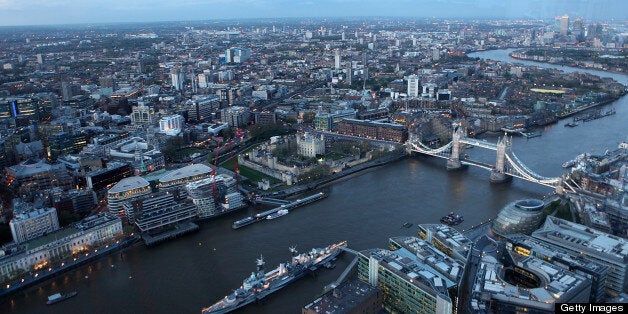
Consider two major London buildings: the Shard and St Paul's Cathedral. One is a monstrous addition to the London skyline which dominates views of the city and has divided public opinion between those who hate it and those who loathe it. The other is the Shard.
It is easy to forget today that when St Paul's was finished it was widely reviled. Even before it was completed, critics were compiling book length accounts of all that was wrong with Wren's cathedral. They complained that there was no glazed upper storey, that the dome was too dominant, the church too massive, the design too elaborate and the interior too plain. They even noted, surprisingly, that there were no good views of it.
Hatred of the Shard, the vast new skyscraper recently built a mile away in London Bridge, is deep set - although it is driven by blogs and tweets not books.
When the cathedral was finished in 1724, it was old fashioned, built in an elaborate Baroque style which had been rejected for the geometric simplicity of Palladianism. By then, Wren's first designs (which had been so universally hated, despite royal support, that he had to revise them) were half a century old.
The Shard was designed as long ago as 2000, apparently when its architect, Renzo Piano, sketched it on a restaurant napkin, and it belongs to the stable of priapic glass boxes which gave physical form to free market excess over the last few decades.
The similarities do not end there. Both buildings have been accused of promoting debunked and harmful ideologies. For the cathedral it was Catholicism; for the Shard it is wealth. A country's tallest buildings are a good guide to the values which it holds dear. In the 17th Century it was churches which reached to the heavens; today it is banks and law firms. Tellingly, 80% of the funding for the Shard is from a group of Qatari businesses, the new gods of the financial world. It was the government which paid for most of St Paul's, out of a tax on coal which the cathedral then used as security to raise vast loans.
But there are important differences too. St Paul's replaced a vast predecessor which had been severely damage in the fire of London, while the Shard replaced a much smaller tower block. St Paul's was built during a great boom period when London became the biggest city in Europe, the Shard began its construction just as the greatest financial crash since the 1930s was beginning. St Paul's was a public building built by the government and open to visitors (and is still free for services at least), access to the Shard is restricted to one floor and costs an adult £30.
The biggest question is, of course, how the Shard will be seen once the dust has settled. Wren's cathedral is now so integral a part of London's fabric as to have become a repository of the country's grandest beliefs about itself. The photo of its dome surrounded by smoke during the Blitz is a visual shorthand for English endurance in the face of disaster, while its vast interior is accepted as the appropriate backdrop for major state events, most recently Thatcher's funeral. Could the Shard do the same?
I suspect the answer is that it will. The reason is that both buildings, deeply problematic as they are, are bold in design and bombastic in execution. To my eyes the Shard is overblown, dominating views even in distant suburbs with its sketch-like design. Its boldness is misplaced, a piece of boring machismo that is entirely out of kilter with its surroundings. But obnoxiousness has a short lifespan as forms become familiar and familiarity becomes essential. Even a sense of disappointment might help: both buildings were accused of failing to equal continental competitors, for St Paul's it was St Peter's in Rome, while the Shard was quickly overtaken in height by a block in Moscow.
The dome of St Paul's, however large and foreign it once appeared, was so clear and recognisable in its outline that it quickly became fundamental to London's landscape. As it survived to accompany the city through times of peace and turmoil so it acquired affection. The Shard will do the same. A smaller building could be ignored but simple designs on this scale cannot be resisted for long. Hatred is always close to love.